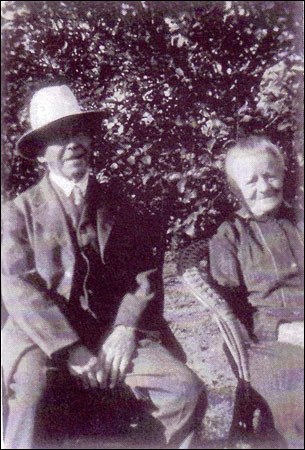Charles Lawrence, (1862–1942)
Paternal grandfather
Charles was the second son of William Lawrence and Mary-Ann Vaughan. He was 18 when Deborah Bates was expecting their child and it was said that it was his mother who prevented him from marrying Deborah. The baby, Albert, lived with Deborah whilst Charles became a lodger with the Knight family and an apprentice in the their boot and shoe factory on Manton Road, Rushden.
In time Charles worked his way up to become a partner in the business which then became known as ‘Knight and Lawrence’. When he was 22 he married Elizabeth Osborne and by the time he was 30 they were living in a detached house in North Street and it was there that his son, Albert, was sent when first his mother and then his grandmother died. Knight and Lawrence was a successful company and Charles, who was fond of travel and had a reputation as a ladies man, was able to ‘slip away to the smoother, easier, more seductive life of warmer climates, notably the Mediterranean’. (The Vanished World, p.7)
Sometime in the early 1900’s he acquired enough money to buy a piece of land in Essex Road and build himself a villa-type house, with an orchard garden, which he named Menton after his favourite Mediterranean resort. In 1906 the Knight family reported that Lawrence was retiring from the business. In reality it seems his philandering became too much for the reputation of the firm and that the Knights came to a financial arrangement with Charles, giving him an allowance of £200/year on condition he left the country. In 1910 one of the partners was sent to ‘escort’ Lawrence onto a ship bound for South Africa and from there Charles sailed on to Australia where he spent four years establishing a business before his wife joined him in 1914. The couple settled in Melbourne, remaining there for the rest of their lives. Charles Lawrence died in 1942.

H.E. knew Charles only by reputation. In a letter to the pianist, Harriet Cohen, he asks her to send ‘violently coloured pictures of Florence and Naples such as my grandfather used to send home’. ‘I have no personal visual recollection of him whatever’ he wrote in The Vanished World, (p.7) ‘except from photographs, in which he looks remarkably like H.G. Wells, whose undeniable and fatal attraction for women he shared. Short and not particularly handsome, he may fairly be called a lady-killer, ...I think I saw him perhaps twice or three times in my life, so frequent and prolonged were his journeys about the world, and on neither occasion did he offer a word or sign of recognition.
H.E. doesn’t record any of his father’s views on Charles except to say that ‘one of the positively good things he had inherited from his recalcitrant father, and which in turn I have failed to inherit from him, was a near genius for doing anything with hammer, saw and nails’. (The Vanished World, p.19)
Charles is portrayed as Uncle Cosmo in the Uncle Silas story 'A Funny Thing'.
Image opposite: Charles Lawrence with his wife in later years in Australia.
